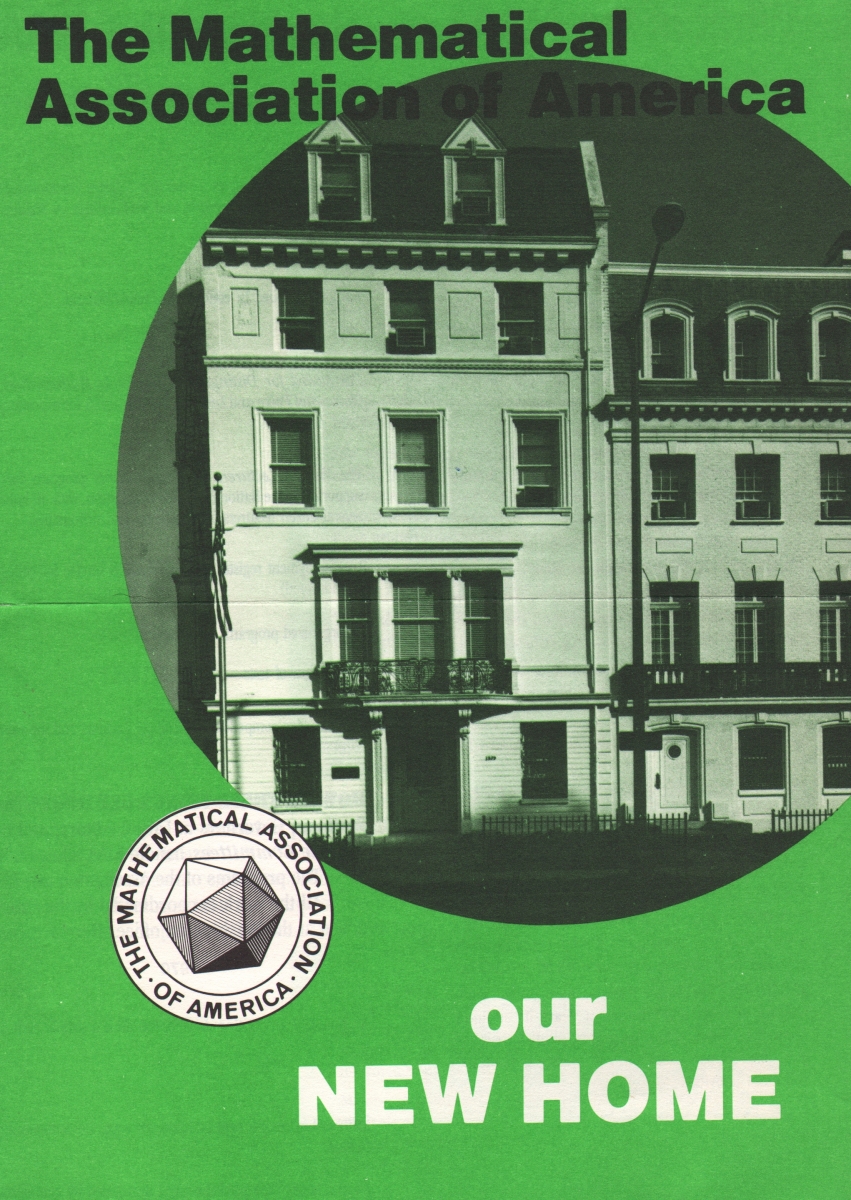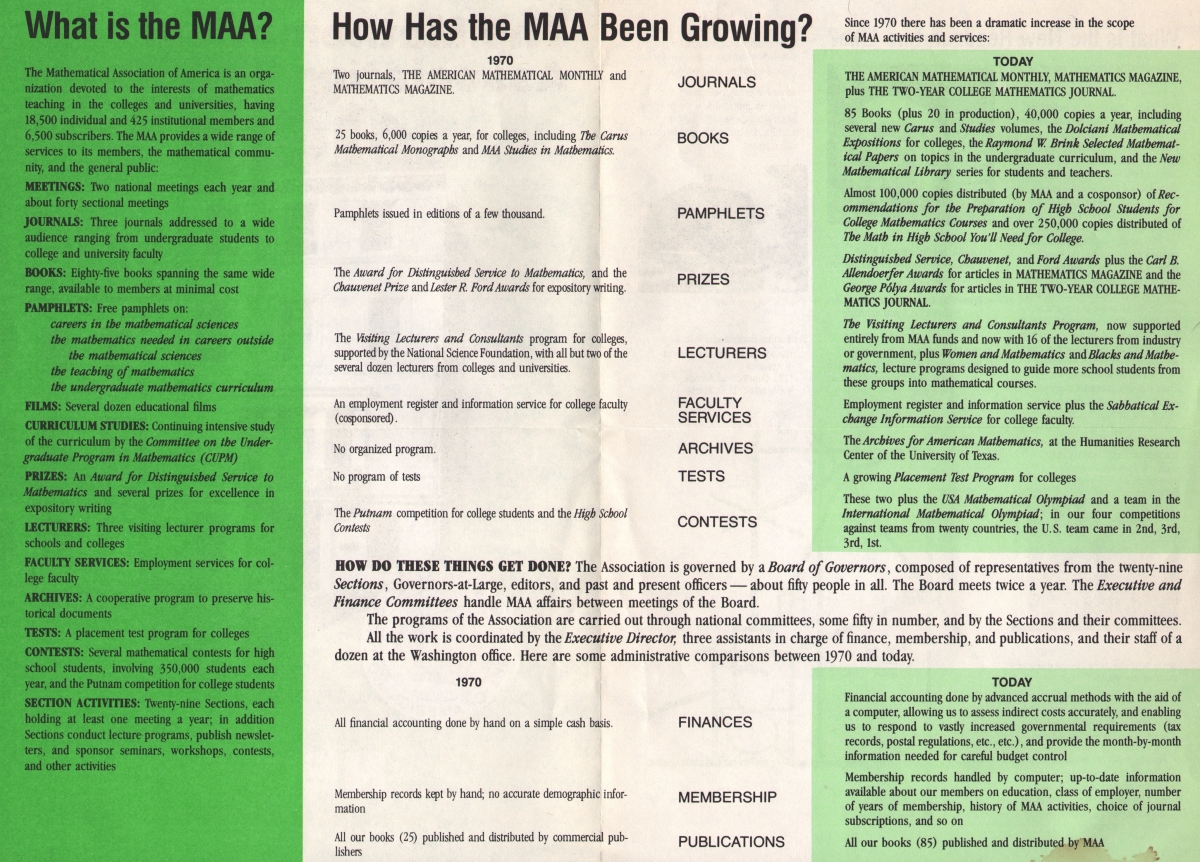Teaching Mathematics with Ephemera: Identifying Mathematical Ephemera
In addition to exploring Convergence, where might instructors locate examples of mathematical ephemera to incorporate into their mathematics classes? A great way to start is simply by keeping one's eyes open to what is already in the daily environment. Are there older flash cards, examination papers, or instruction manuals around the office? Did your institution's archives preserve copies of flyers and posters announcing events in the mathematics department? Does a colleague collect magazine or newspaper advertisements containing references to mathematics? Has your department undertaken initiatives, such as advocating for women or minorities to pursue mathematical careers or urging Americans to convert to the metric system, that might have left mailings or promotional items behind in a file cabinet or drawer? Have you seen broadsides, lecture tickets, or report cards reproduced in history of mathematics scholarship? Has an overseas colleague sent a letter with an interesting postmark or stamp? Do students have memorabilia at home that connects with the history of mathematics—perhaps an instruction manual for a slide rule or early handheld calculator? If you prefer not to wait for a serendipitous discovery, following are some suggestions for locating online resources related to a few popular categories of ephemera.

Stamps honoring Fr. Angelo Secchi, who founded astronomical spectroscopy, and Maria Agnesi, female mathematician and textbook author, issued in 2018 by Vatican City. Image provided in 6 September 2018 press release.
Stamps: Philately might be one of the most well-known hobbies of mathematicians looking for engaging ways to tell stories about the discipline's history. Philamat, which appears to be the largest digital collection of postage stamps depicting historical mathematicians or achievements, is a joint effort of Sociedade Portuguesa de Matemática and the British Society for the History of Mathematics. Individual sites have been assembled by Jim Kuzmanovich and Jeff Miller.
Advertisements: Twentieth-century magazines, particularly those focused on science and engineering, frequently carried advertisements for slide rules, computers, and calculators, among other mathematical tools. These can illustrate historic technology to students, as well as cultural attitudes toward these objects and perceptions of gender, race, and class. University and public libraries may continue to maintain print runs for browsing; perusing digital copies for items that are not articles can be more complicated since libraries and contractors conducting large-scale scanning projects have not always included front and end matter, as well as other pages that were not a part of text articles. Some advertisements may already have been harvested by museum curators for online exhibitions, such as the Smithsonian's National Museum of American History's 2014 show, The Early Sixties: American Science.
General Collections of Ephemera: A number of archival, library, and museum websites have sections for ephemera that may be searched for mathematical items. For example, a search of the Library of Congress's collection, "Printed Ephemera: Three Centuries of Broadsides and other Printed Ephemera," returns 114 results, beginning with a self-promoter's claim to have proved that one side and one angle are sufficient to determine the sides and angles of a triangle. Many of the other leaflets are educational announcements and materials. Remember also to inquire at local archives and history societies. Smaller or specialized institutions with mathematical ephemera include: Historic New England, the Naval History and Heritage Command, and the California State Library.



Informational brochure about the MAA and its then-new headquarters in Washington, DC, ca 1970. In the possession of the author.